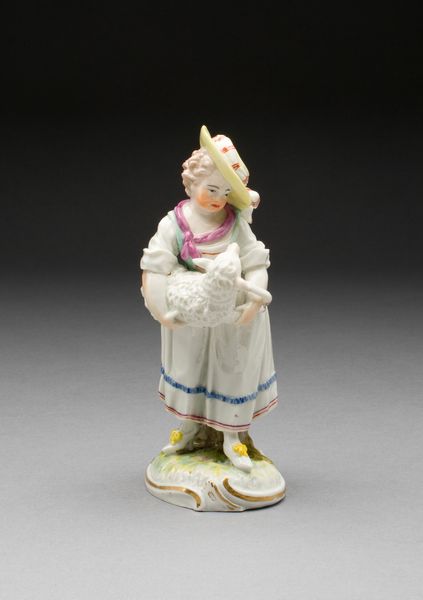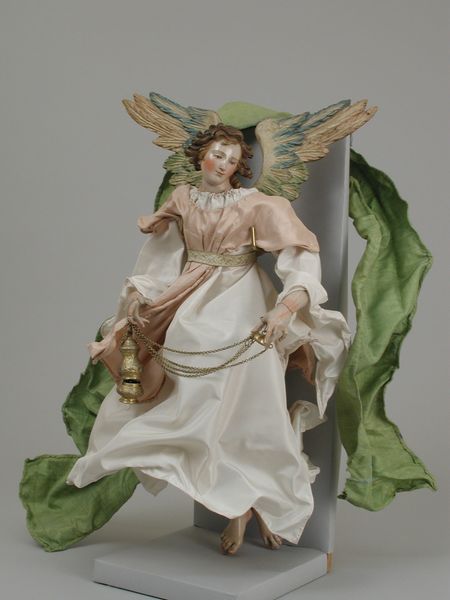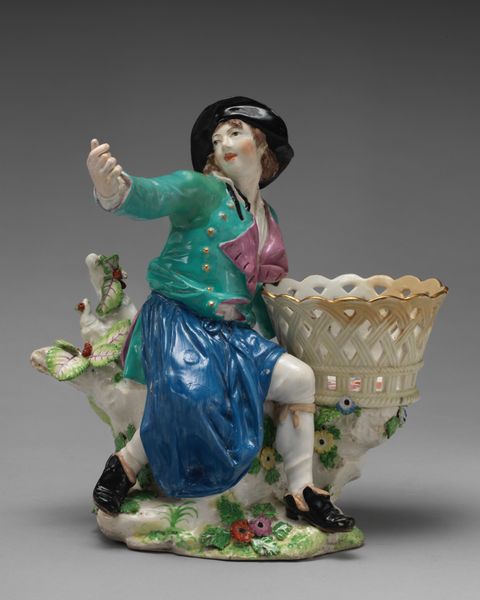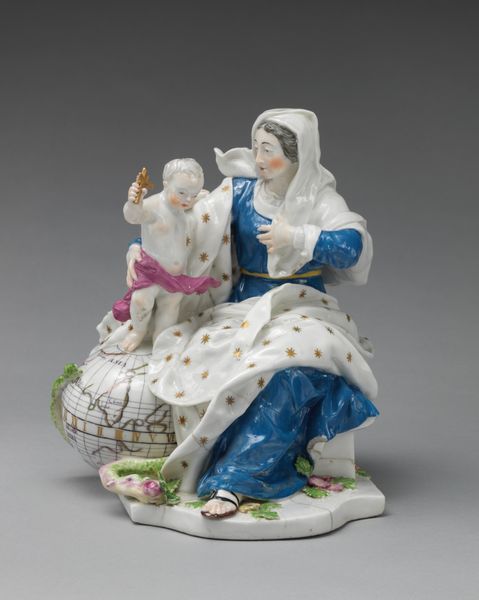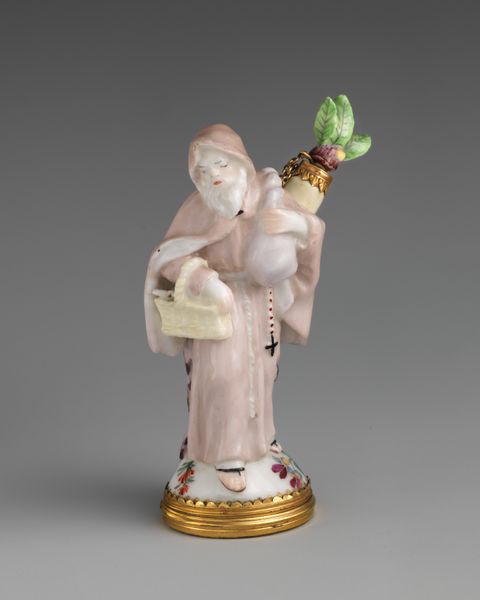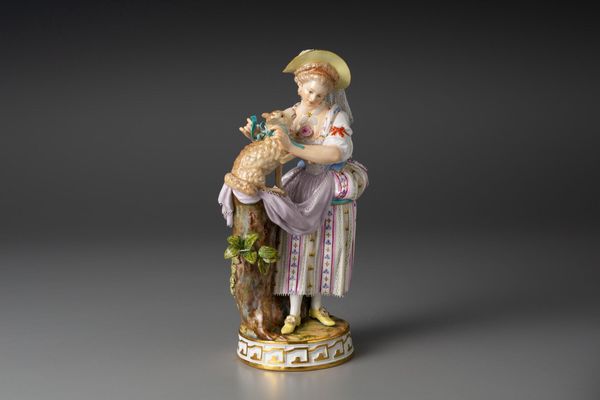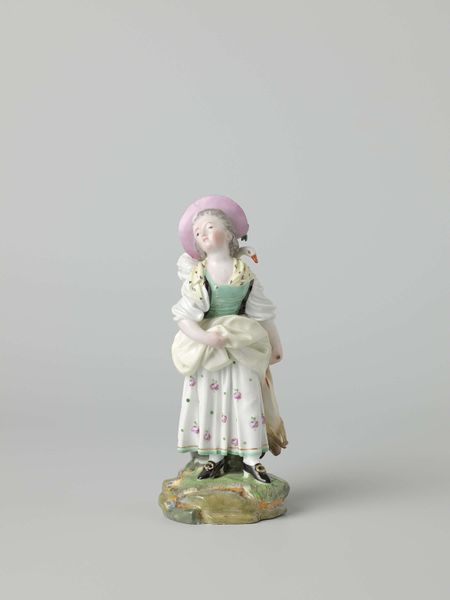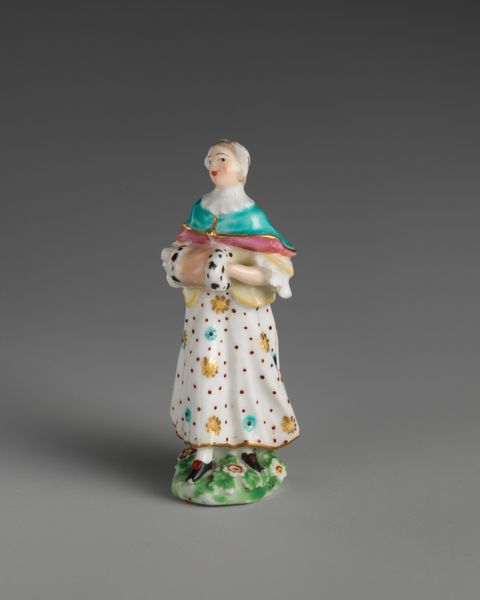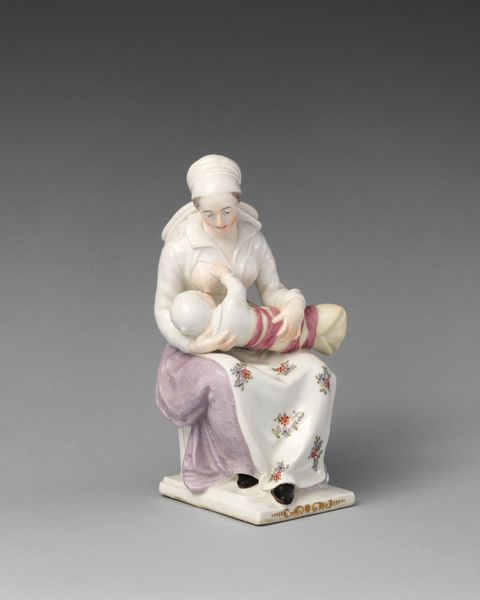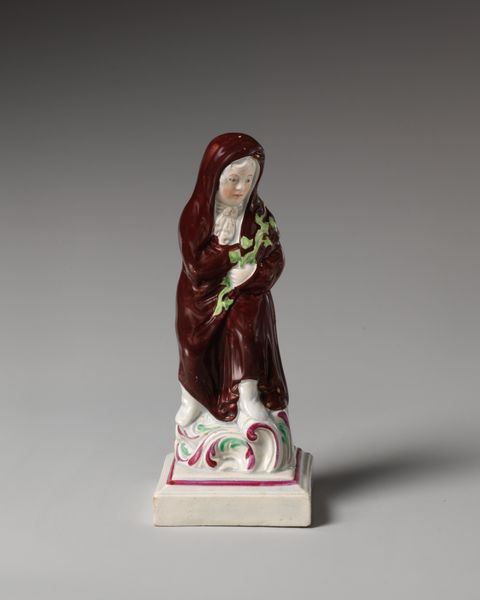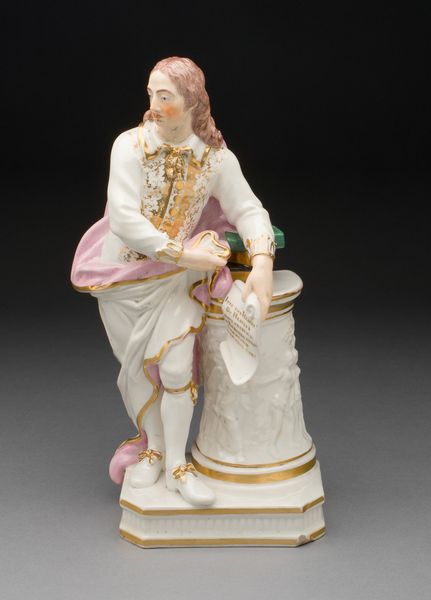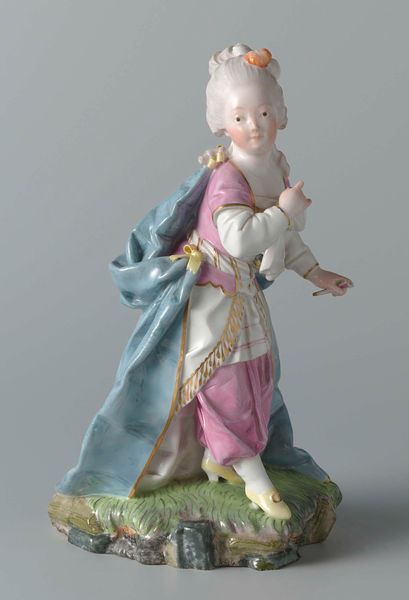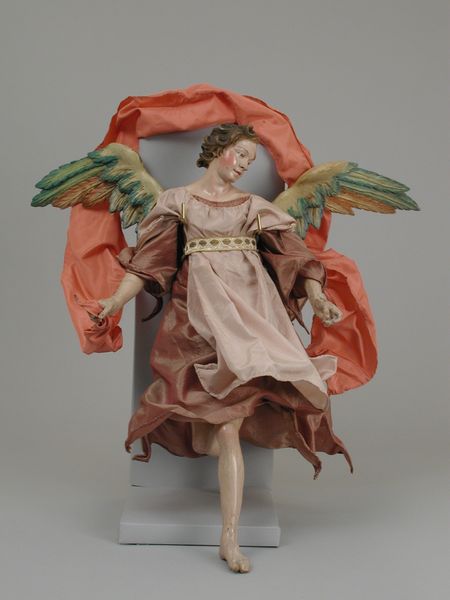
Female fruit seller (one of a pair) 1750 - 1760
0:00
0:00
ceramic, porcelain, sculpture
#
portrait
#
ceramic
#
porcelain
#
figuration
#
sculpture
#
genre-painting
#
decorative-art
#
rococo
Dimensions: 9 1/2 × 9 in. (24.1 × 22.9 cm)
Copyright: Public Domain
Editor: This is "Female Fruit Seller," a porcelain sculpture from around 1750-1760 by the Chelsea Porcelain Manufactory, housed at the Metropolitan Museum of Art. It's quite charming, with a pastel palette. I’m struck by how this seemingly precious object depicts a common vendor. What does this porcelain figure reveal about the period's values and the role of such crafts? Curator: The very act of representing a fruit seller in porcelain transforms our understanding of labour. Porcelain, a material associated with luxury and aristocracy, is here employed to depict someone engaged in commerce, in work. The juxtaposition begs the question: was it made for someone of nobility, who would marvel at seeing a commoner re-imagined with such material and craft? Or did new mercantile classes drive production in the period, influencing workshops such as Chelsea to meet their demands? Editor: That makes sense. I hadn't considered the relationship between the material and the subject it represents. Does the intricacy of the porcelain work, particularly the details of her clothing and the woven basket, speak to a desire to elevate her status or perhaps aestheticize the idea of labor itself? Curator: Precisely! Think about the labor required to create this object: the mining of materials, the skilled craftspeople forming the figure, the firing process. The high level of craftsmanship underscores a shift in how labor and materiality intertwine. She is at once the object of high craft *and* depicts someone who does work to sell goods. It suggests a complex relationship between artistic creation and commercial activity. Is it commentary? Perhaps simply fulfilling new desires by clientele? Editor: So it's not just about what is depicted, but how the means of production influence meaning? It’s certainly more than a pretty figure! I will look more critically now, examining how value is assigned through materials and skill. Curator: Exactly! By understanding the context of its production, we can truly appreciate what the artwork communicates about its historical moment and those that it aimed to capture – and for whom.
Comments
No comments
Be the first to comment and join the conversation on the ultimate creative platform.
